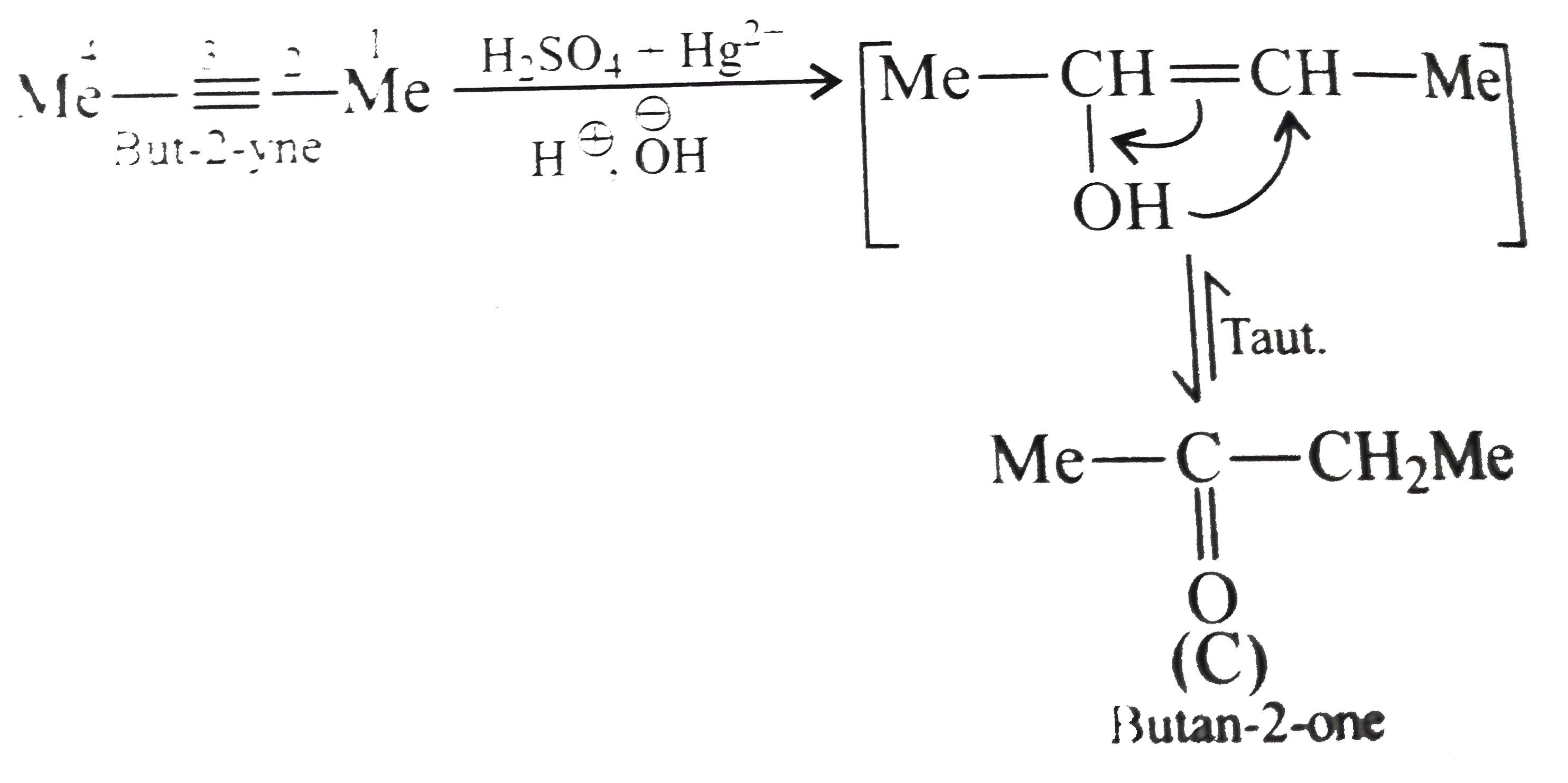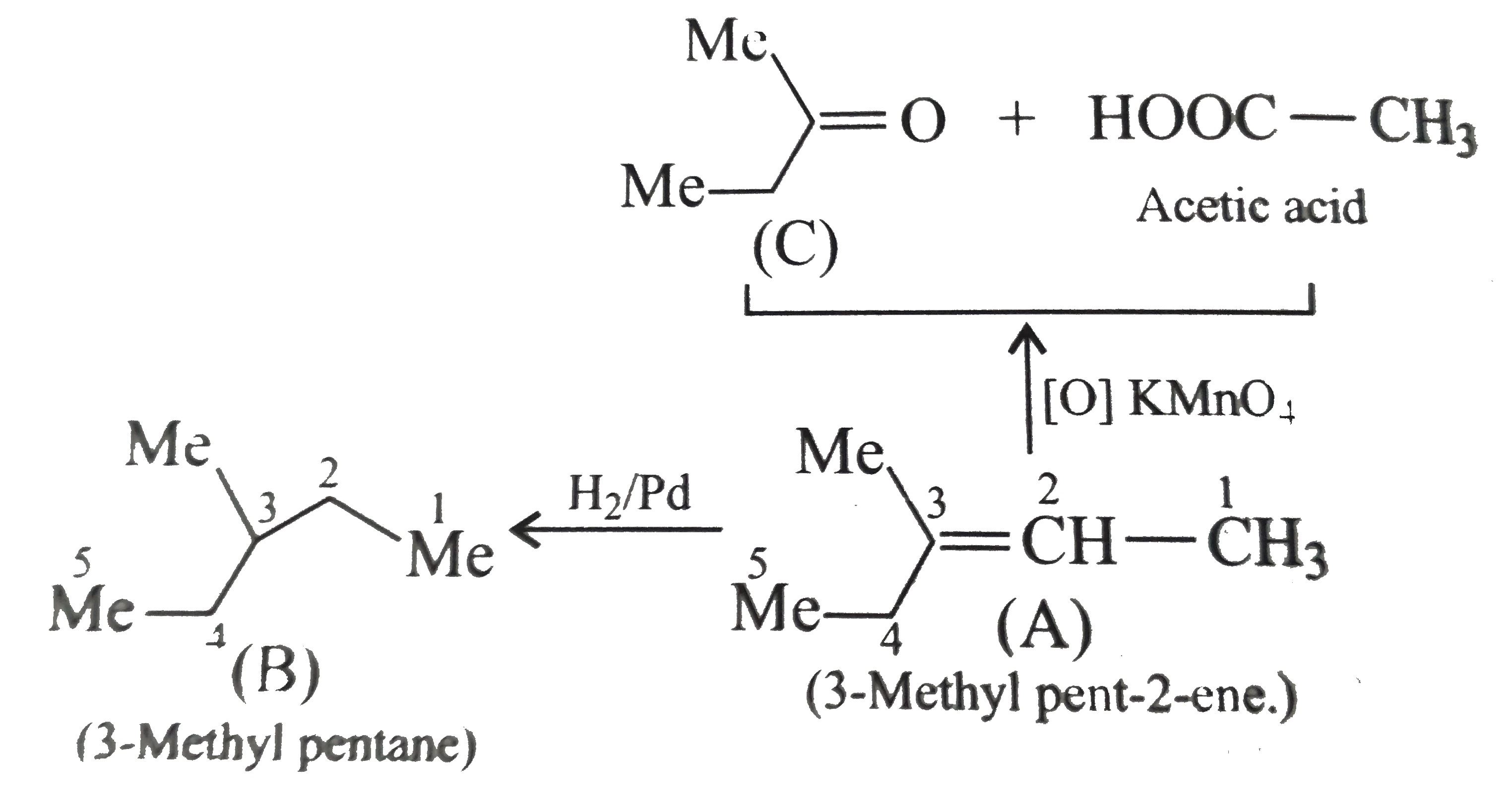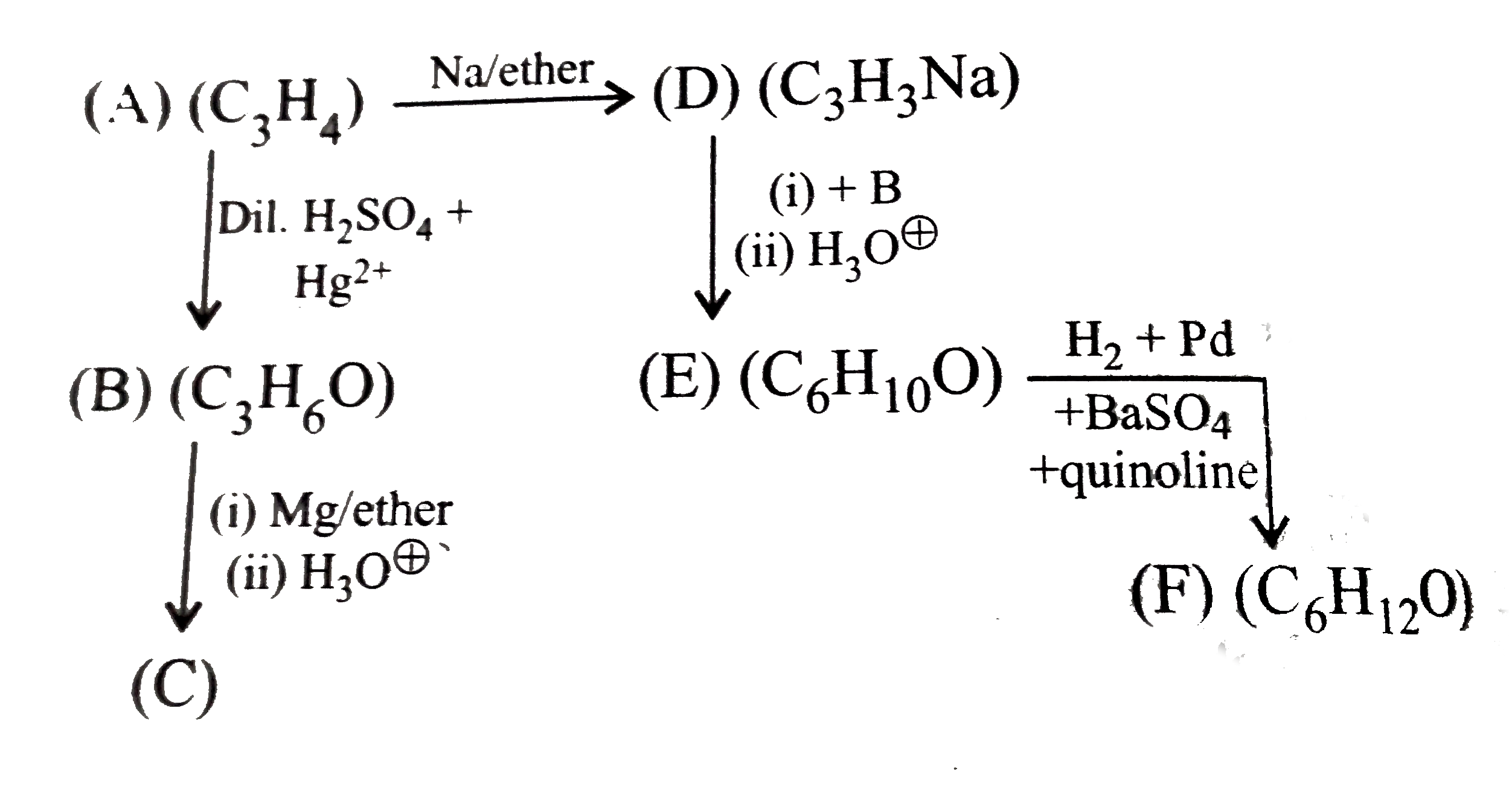A certain hydrocarbon (A) was found to contain 85.7% carbon and 14.3% hydrogen. This compound consumes 1 molar equivalent of hydrogen to give a saturated hydrocarbon (B). One gram of hydrocarbon (A) just decolourised 38.05gm of a 5% solution (by weight) of Br2 in CCl4. Compound (A) on oxidation with concentrated KMn4 gave compound (C) (molecular formula, C4H8O) and acetic acid. Compound (C) could easily be prepared by the action of acidic aqueous mercuric sulphate on 2-butyne. Determine the molecular formula of (A) and deduce the structures of (A),(B), and (C).
(i) For empirical formula :
∣∣
∣
∣
∣
∣
∣∣ElementPercentageRelative no. of atomsSilplest ratio=percentageat massC85.785.712=7.141H14.314.31=14.32∣∣
∣
∣
∣
∣
∣∣
Therefore, empirical formula =CH2.
(ii) One gram of hydrocabon uses 38.05gm of 5% solution of Br2 in CCl4, since it is alkene, 1mol(A) uses 1mol of Br2.
∴38.05×5100gmBr2 is used by 1gm of (A)
∴160gm of Br2 is used by 160×10038.05×5gm of (A)
84gmof(A)
∴Mwof(A)=84
Empirical formula w.t. of (A), i.e., CH2=14
Now, n=MwEmpirical formula w.t=8414=6
∴ Molecular formula =(Empirical formula)n
=(CH2)6=C6H12.
(iii) 
(iv) Proceed reverse to obtain the structure of (A)
 .
.
Topper's Solved these Questions
- BOOK - CENGAGE CHEMISTRYCHAPTER - CARBOXYLIC ACIDS AND THEIR DERIVATIVESEXERCISE - Exercises Archives (True/False)2videos
CARBOXYLIC ACIDS AND THEIR DERIVATIVES
- BOOK - CENGAGE CHEMISTRYCHAPTER - BIOMOLECULES, POLYMERS AND CHEMISTRY IN EVERYDAY LIFEEXERCISE - QUESTION BANK8videos
BIOMOLECULES, POLYMERS AND CHEMISTRY IN EVERYDAY LIFE
- BOOK - CENGAGE CHEMISTRYCHAPTER - CHEMICAL KINETICSEXERCISE - Archives Subjective23videos
CHEMICAL KINETICS
Similar Questions
A certain hydrocarbon (A) was found to contain 85.7% carbon and 14.3% hydrogen. This compound consumes 1 molar equivalent of hydrogen to give a saturated hydrocarbon (B). One gram of hydrocarbon (A) just decolourised 38.05gm of a 5% solution (by weight) of Br2 in CCl4. Compound (A) on oxidation with concentrated KMn4 gave compound (C) (molecular formula, C4H8O) and acetic acid. Compound (C) could easily be prepared by the action of acidic aqueous mercuric sulphate on 2-butyne. Determine the molecular formula of (A) and deduce the structures of (A),(B), and (C).
View SolutionA gaseous hydrocarbon contaisn 85.7% carbon and 14.3% hydrogen 1 litre of the hydrocarbon weights 1.26g at NTP. Determine the molecular formula of the hydrocarbon.
View Solution
Knowledge Check
- Question 1 - Select One
Empricial formula of a hydrocarbon containing 80 % carbon and 20% hydrogen is
ACHBCH2CCH3DCH4 - Question 2 - Select One
The following reaction gives five compounds of molecular formula C4H8Br2

The number of compounds in X will beA2B3C4D5 - Question 3 - Select One
Emprical formula of a hydrocarbon containing 80 % corbon and 20 % hydrogen is
ACHBCH2CCH3DCH4
A saturated hydrocarbon contains 82.66% carbon. Its molecular formula is
View SolutionAn organic compound contains 49.3 % carbon,6.84 % hydrogen and its vapour density is 73 Molecular formula of the compound is
View SolutionA compound contains 92.3% of carbon and 7.7% of hydrogen. The molecule of the compound is 39 times heavier than hydrogen molecule. The molecular formula of the compound is
View Solution
The compound F(C6H12O) on oxidative ozonolysis yirlds acetic acid and a compound (G) (C4H8O3). The new compound (G) on heating gives:View SolutionAt STP one litre of a gas weight 1.25 grams. The gas contains 85.71% of carbon and 14.29% of hydrogen. The formula of the compound is
View Solution

